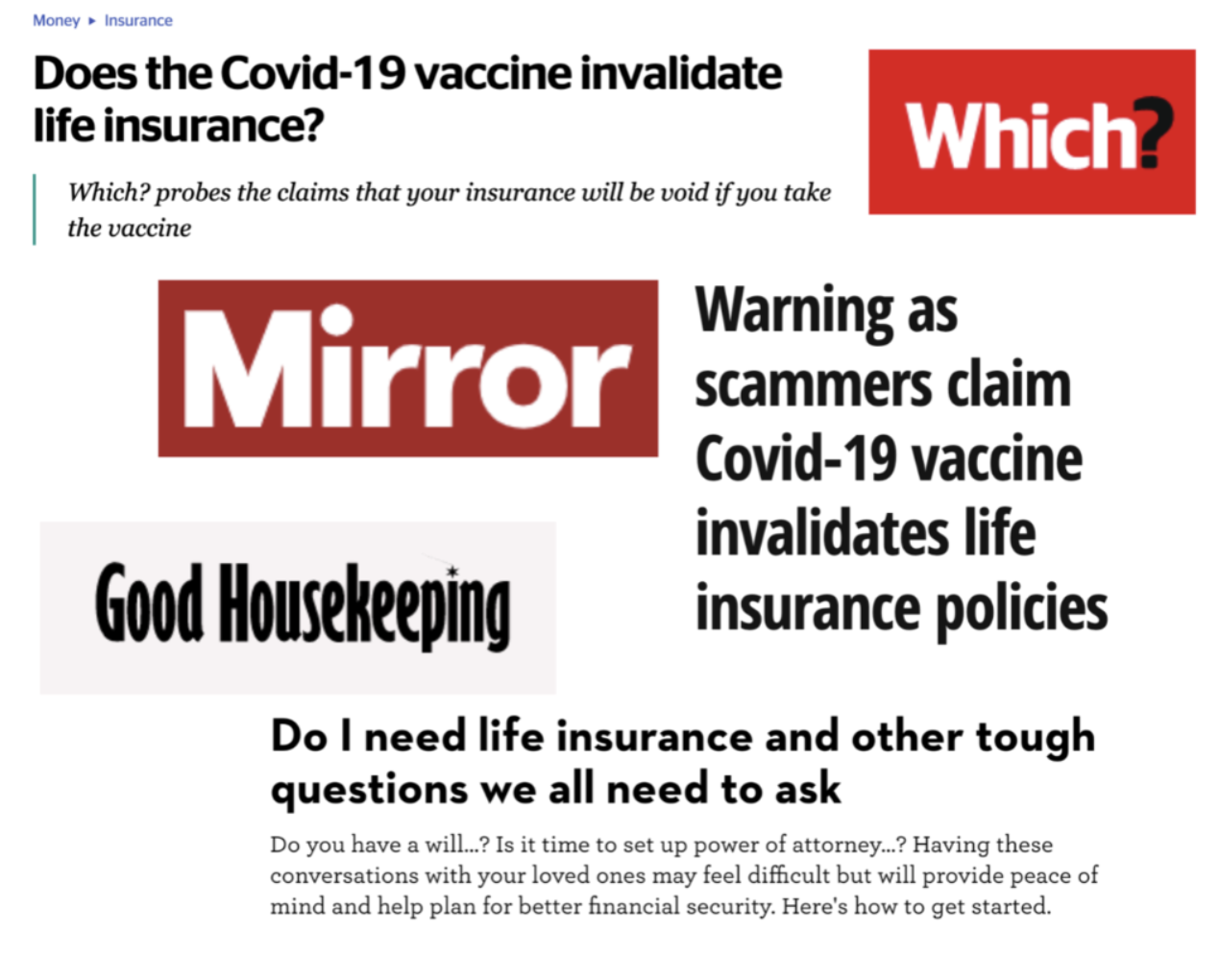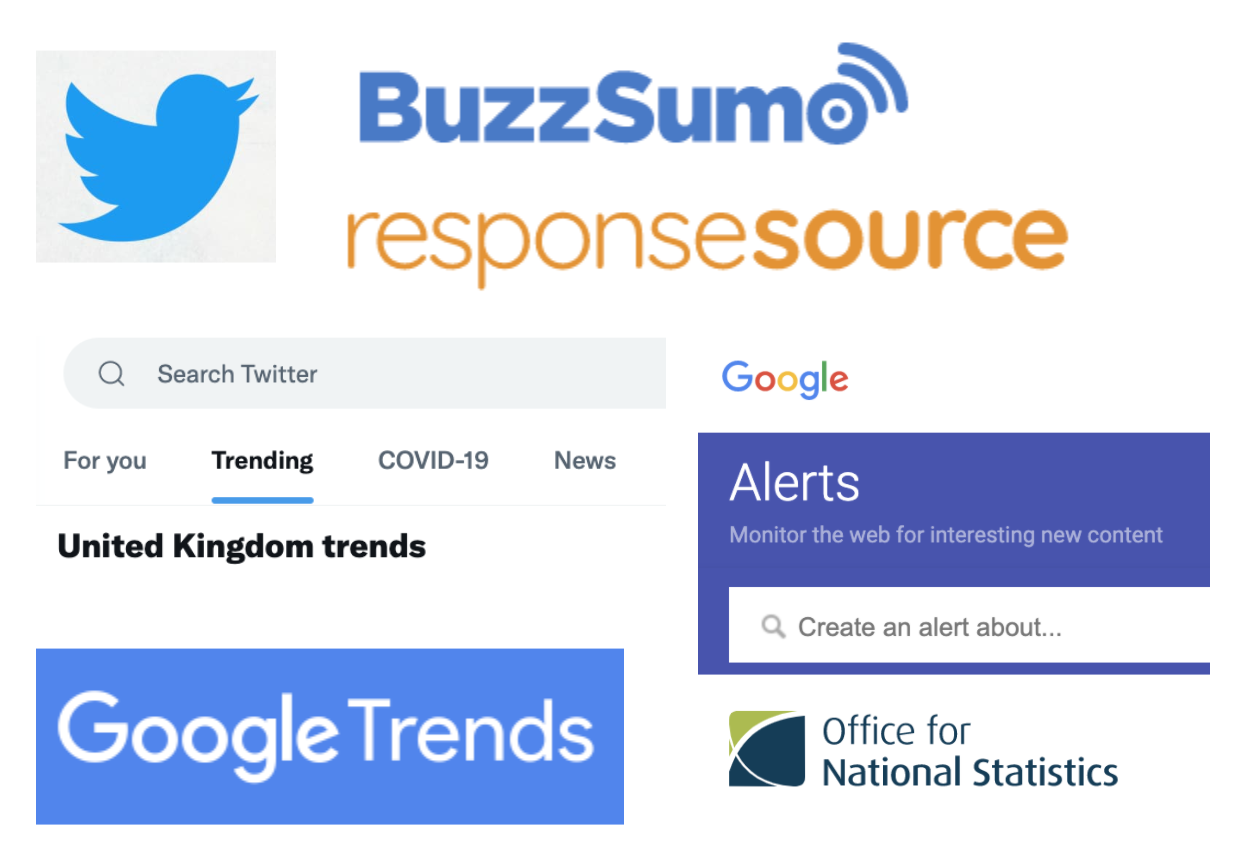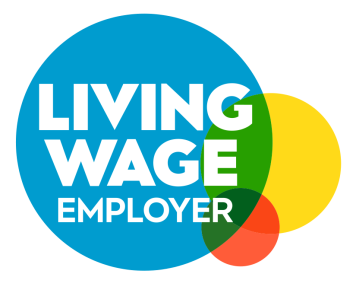A Guide to Successful Newsjacking: Top tips from the best in Digital PR
If you’ve ever utilised breaking news trends to benefit your brand, you’re a newsjacker!
Newsjacking is one of the fastest, most effective ways to get your brand into the media. Done right, you’ll insert your brand’s voice into the trending, relevant topics for their industry, securing both coverage and links that will positively impact your brand awareness and organic presence.
But it’s far from an easy task... In this guide you'll find top tips from some of the best digital PRs in the industry to give you insight on the best ways insert relevant and valuable brand content into breaking news stories.

WHAT IS NEWSJACKING?
Newsjacking is a process used commonly by PRs to add a brand’s content, thoughts, opinions, or data into breaking news stories. It's essentially piggybacking on trending news topics to support an SEO strategy, secure brand coverage and engage with the target audience.
The process requires close monitoring of media outlets, strong press relationships and excellent timing. In order to be successful and grab attention, the brand must announce their reaction (commonly via a press release, or social media) while the news is still a hot topic, but before most of the media and journalists have reported on it.
WHAT IS NEWSJACKING?
Below is an example of successful newsjacking from the Evoluted Digital PR team.
Following the breaking news about a scam insurance email from ‘Allianz’ claiming that taking the COVID-19 vaccine would invalidate life insurance, we put our insurance client right at the heart of this story. We secured coverage and links across Which?, Good Housekeeping, Daily Mirror and more by outreaching an expert comment from one of our client's insurance specialists which debunked the claim in the scam.
It was relevancy and speedy reactions that led to the success of this piece. When we sent out the expert commentary, this scam story had only been published in The Financial Times so far!

TOP TIPS FOR SUCCESSFUL NEWSJACKING: WHAT DO THE EXPERTS SAY?
It’s a tough job, so where do you even start? If you’re new to the industry, we’ve asked the best in the business some of your most burning questions and their answers provide sweet nuggets of advice that are sure to help you secure reactive coverage.
WHAT PROCESSES DO YOU HAVE IN PLACE TO FIND NEWSJACKING OPPORTUNITIES, AND WHAT SOURCES DO YOU USE?
You’ve got to move fast with newsjacking or you’re bound to miss out for your brand or client. So, how do you quickly and effectively find newsjacking opportunities?
David White, Founder and Director of Content Marketing at Connective 3 says: “We are always on the lookout for reactive opportunities. Each week, we check out the ONS release calendar, the Sharecast economic calendar, and visit https://daysoftheyear.com."
This lets us see what events are happening in the following week, and allows us to plan commentary. We also always have live news on in the background when we work (BBC, Guardian Live etc), which allows us to see any breaking stories as they happen.”
Dan Rawley, SEO Service Leader at Honeycomb Search says: “Google News is a great starting point, and for clients who are involved with topics that frequently come up in the news, we set up Google Alerts to notify us of breaking stories in their niche. Monitoring Twitter's trending topics can also uncover opportunities, though this tends to be for mass-market stories so rarely works for smaller clients”.
Laura Mallinson, Digital PR Specialist at Seeker Digital says: “From trending Twitter searches and what’s popular on Netflix, or PMQs, to what’s going on with the weather - there truly is a newsjacking opportunity available for all clients. Every day we check the headlines, what’s trending on Twitter, Google Trends and social streams like Instagram and Facebook to see what people are talking about. Tools such as BuzzSumo and Google trends alerts are super useful.”
Beth Turner, Senior Digital PR Strategist at Connective 3 says: “Setting up newsjacking calendars for clients is also a great way of seeing what reactive days are coming up that clients can react to, for example ‘National Beaches Week’, which would be a great one for travel clients to comment on. Twitter is great for finding out trending stories that you can jump on too – just check what’s trending in your area and if there’s anything that might be relevant to your client’s industry – hop on it! Response Source is a great tool for finding UK-based newsjacking opportunities.”

WHEN THERE’S A TRENDING TOPIC, HOW DO YOU DECIDE WHETHER TO DO A NEWSJACKING RATHER THAN A REACTIVE PR PIECE?
Considering you need to be so quick with newsjacking, you probably have less than half an hour to make a decision on whether to go ahead. How do you decide whether to newsjack with a comment or create a reactive press release?
Paige Dana-Marie Evans, PR at iProspect says: “It depends on what the trending topic is. Is it something such as a fashion trend that will have a 2-week presence within the market? Or would it be a finance topic that would probably change within a day? Reactive PR can be used when the time-frame is longer, so you will have more time to utilise your tools, look at trends and searches. Whereas, newsjacking is needed when you have to literally jump on a news point right then, before it moves on.”
Leah Wood, Digital PR & Content Executive, at Blue Digital says: “Timing and content availability are key to me when deciding whether to newsjack or pull together a reactive PR piece. If the trending topic has just broken and the story is likely to move fast I'd try newsjacking. If the trending topic is likely to stick around for a while, I'd try reactive as there's more time to analyse and repurpose old content or pull something new together.”
HOW DO YOU SELECT THE JOURNALISTS YOU GO TO FOR YOUR NEWSJACKING?
You may have formulated an amazing comment, speedily had it signed off by a client, but if you send it to irrelevant publications and journalists, then it’s a waste of your efforts. So how do you choose journalists for newsjacking?
Becs Wright, Digital PR expert says: “You need to dive into what reporters are covering, whether they link to external sites, and if they include quotes in their coverage. One exceptional place to start is in live blogs (think CNBC, Yahoo! Finance).”
Beth Turner, Senior Digital PR Strategist at Connective 3 says: “I would always Google search to find journalists who have covered similar stories to the one you’re writing/news you’re reacting to and outreach to them with your story. I’d also always ensure you’re asking the journalist if they would like any further, specific commentary from your client too – I have secured great journalist relationships with this approach.”
DO YOU ONLY CONDUCT NEWSJACKING FOR TOPICS THAT YOUR CLIENT IS DIRECTLY RELATED TO? OR DO YOU COMMENT ON BROADER TOPICS?
It can be easy to fall into the trap of trying anything to get more links and hit your KPI, but what is worth your time?
Jennifer Macdonald, Head of Marketing at Glass Digital says: “While we’re always on the look out for newsjacking opportunities that our clients can share their direct expertise on, I would advise to always be aware of broader topics too. For example, if something breaks in the news regarding SME’s or apprenticeship schemes, most businesses will be able to comment on this as it relates to most companies.It is particularly important to keep an open mind when it comes to more niche clients because if your client sells sofas for instance, it is very rare that there will be something directly related to that product to comment on. However, that client can also newsjack stories around interior trends, business news or even celebrity home styles”.
Natalie Richardson, Freelance Digital PR Consultant says: “When it comes to newsjacking success, I believe that there needs to be a blend of newsworthiness and business (or audience) relevancy, otherwise it can feel random and unaligned to what your client does. To ensure this relevancy, I make sure that I am only putting my clients forward for newsjacking opportunities which include related (or at least ‘tangentially related’) topic areas.”
Alex Hickson, Digital PR Lead at Rise at Seven says: “It depends on the subject matter. For a financial client, it's not uncommon to place them into any conversations around money or spending for example which can dissect a variety of sectors and topics. However, if you have a fashion brand that all of a sudden is trying to offer opinions on the stock market or a tech subject - most journalists will have more relevant options of comments that they'll likely go with.”
WHAT ARE YOUR TOP TIPS FOR SECURING A LINK WHEN YOU PROVIDE A COMMENT?
For some, brand awareness and coverage is your aim. But, if you’re supporting an SEO strategy with digital PR, how do you guarantee that all-important link with your expert comment?
Jennifer Macdonald, Head of Marketing at Glass Digital says: “When we provide an expert comment, we always include a link within the email so that it is easy for journalists to see and include this within their feature. However, when journalists use your comment but don’t link, I would always send a follow up email asking if they’d be happy to credit our client for providing them with expert information. Often journalists don’t want to endorse products or services, so I usually stick to a homepage link for opportunities like this.”
Dan Rawley, SEO Service Leader at Honeycomb Search says: “If your comment gets used, I find it's easier to persuade a journalist to link to a resource on your client's site that adds editorial value to the journalist's article - for example, some guidance they've written on that topic, or a white paper they've produced - than if you just ask them to link to the client's home page.”
David White, Founder and Director of Content Marketing at Connective 3 says: “It helps to have an author page live on-site, so journalists can link through to the profile while also seeing other articles written by the spokesperson. We find that this can help drive extra links from commentary.”
Laura Mallinson, Digital PR Specialist at Seeker Digital says: “When outreaching reactive comments, I always try to provide a useful client link that relates to the topic and gives the story an extra edge. For example, is there an advice page or blog content on the topic you can use to link out to? Alternatively, if you don’t have a specific content page related to the comment’s topic, you’re likely to be wanting a link to the homepage or an about page of the expert providing the comment. The best way to secure a link this way is to ensure your comment is adding value to the journalist's piece through a unique insight, data, case study or revealing piece of information. Ultimately, the quote needs to be of value to encourage journalists to link back to the client’s page as the source. Plus, with both options, there’s no harm in actually asking the journalist for a link - in a polite way of course!”
George Driscoll, Digital PR Consultant at Root Digital says: “Ensure the bio is as strong as possible. I like to reference if my client has ever been published in top-tier publications to prove their writing is worthy of most outlets. The bio should describe exactly why they are an expert, and if possible tweak this to be specific to the piece in question.”
Jade Beddington, Account Director at Radioactive says: “Some forms of newsjacking lend themselves better to securing links than others. For example, a reactive comment may secure credit links when used, but wherever possible we always try to ‘close the loop’ and provide something onsite within the comment - be that some content, an onsite calculator or tool, or a sign-up form - to ensure a link is as guaranteed as possible. Often providing a journalist with a timely, relevant, and interesting comment quickly is enough to secure a link from a comment, but we never take that for granted. Even more likely to make the title link will be if the client has some onsite content that is directly relevant to the story. Perhaps the client published a report, particular service or campaign that is relevant to the story being responded to.”
DO YOU HAVE ANY TOP TIPS FOR GETTING YOUR CLIENT’S COMMENT INTO AN ARTICLE THAT’S ALREADY PUBLISHED?
If you manage to get your comment and reaction in before a journalist writes their piece, that’s such a win. But what if they’ve already published a piece but you’ve got the perfect comment from your client?
Alex Hickson, Digital PR Lead at Rise at Seven says: “I've managed to piggyback my comment onto existing news stories before by placing my client as a thought leader into a conversation that's already happening. However, I'd only do this if I was CERTAIN they were adding value and if it's still timely. There's no point wasting resources if it's a conversation that's becoming old news or other thought leaders have got their first.”
David White, Founder and Director of Content Marketing at Connective 3 says: “Often, with reactive opportunities, the story continues to evolve, even after publication. If this is the case, I would recommend reaching out with a comment that covers the updates that have happened since the article was published. This always helps land extra coverage!”
Laura Mallinson, Digital PR Specialist at Seeker Digital says: “My top tip for this is to always be prepared. If you know that certain events or trends are coming up, prepare a comment from your client ahead of time so you’re ready to jump on opportunities. Next, you want to head to Google News or BuzzSumo to see the latest, most relevant stories and those are the journalists you contact to add your comment into the mix. The sooner you can contact them with additional commentary from the time the article is published, the better. Most journalists will move on from a story and disregard new information 1-2 hours after publishing the piece.”
ARE THERE CERTAIN TYPES OF CLIENTS YOU THINK LEND THEMSELVES BETTER TO NEWSJACKING TACTICS?
Are all clients and industries suited to newsjacking, or are you wasting your time with some?
Karim Adib, Digital PR at SEO Works says: “I have found that clients in the tech and financial space work really well with this. Basically, any industry with a lot of news and fluctuations opens up the door for you to put your client in the middle of it.”
Dan Rawley, SEO Service Leader at Honeycomb Search says: “I definitely think some clients are more suited to newsjacking than others, simply because some operate in niches that are always in the news. For example, we find a lot more newsjacking opportunities for our clients in the education, health and sports industries, because they’re always in the news cycle, compared to those in manufacturing or scientific niches. More broadly, having clients who are engaged and proactive enough to sign off quotes for newsjacking quickly will allow you to pursue far more reactive opportunities than those where you need to get everything pre-approved.”
ARE THERE ANY TOP TIPS YOU HAVE FOR MAKING A DIGITAL PRS LIFE EASIER WHEN IT COMES TO NEWSJACKING?
Digital PRs have never-ending plates to spin during the day, so anything that might make your day easier and more productive is so useful.
Tom Johnson, Founder of Reactive PR says: “Keep it really simple so you can be fast. Everyone is going to say you should add value, but I say talk about value - literally. Create a specific hook for journos around a story, "how much is X?”, or "how much Y means" - work it out and centre your pitch around it.”
Alex Hickson, Digital PR Lead at Rise at Seven says: “Newsjacking is easier when you have a good client relationship with an easy sign off process. If you want to be able to newsjack effectively, be transparent and clear what you expect from the client in terms of sign-off, get clarity on topics that are a no-go, and how fast they can react. Speed is an essential part of a good reactive strategy, without it you just end up commenting on old news.”
Cameron Dhaliwal, Digital PR Executive at SEO Works says: “The best starting points would be to follow the hashtags #JournoRequest and #PRrequest on Twitter as well as signing up for HARO and Editorielle.”
George Driscoll, Digital PR Consultant at Root Digital says: “Ensure you have a blacklist of topics your client doesn’t want to, or can’t talk about so you don’t waste anyone’s time.”
Jo Rammell, Senior Digital PR Strategist at Evoluted says: “I use Tweekdeck to effectively keep on top of #journorequests on Twitter - a place for journalists to quickly generate specific comments. I’ve set up activity monitoring for specific keywords that are relevant for each client. When I’m short on time, it’s faster and easier to spot relevant #journorequests now they’re split out, and I don’t need to trawl through unrelated ones. For example, for a fitness client, I have #journorequest personal trainer” set up as its own column, showing only tweets that include those keywords.”
Becs Wright, Digital PR expert, says: “A quote bank is one of the most effective tools you can set up for yourself when you're newsjacking. You can highlight in red if there was no pickup or coverage, green if you landed a link or a mention, and yellow if the quote or comment had good engagement via your outreach (or not). I also think having a quote bank allows you to better understand the commentary style of your different clients or experts. Knowing the style of commentary can be really beneficial because you can ask better questions of your client or expert so they can then provide better commentary that will land them coverage. Don't shy away from having a few questions you ask your client about a specific situation you're trying to newsjack.”

WHAT’S YOUR ULTIMATE TOP TIP FOR SUCCEEDING WHEN A NEWBIE IS STARTING OUT WITH NEWSJACKING?
Starting out in digital PR is an absolute minefield for newbies. So, what top tips will help you succeed from the off?
Natalie Richardson, Freelance Digital PR Consultant says: Be fast, targeted, to the point, and provide all information up-front in your initial outreach! Also, some newsjacking can be pre-planned – take a look at which events (launches, releases, awareness days, holidays, etc.) are coming up, and think about how you can form stories around these for your clients.
Karim Adib, Digital PR at SEO Works says: “Make sure to highlight why your client is relevant to the story. Most journalists can see through faceless companies sending out generic quotes to try to get links. Put a face to the comment or piece and highlight why their opinion matters. Add value to the story and don’t just reiterate what’s already out there.”
Michelle Garrett, PR Consultant and Writer says: “Take care when newsjacking! For example, the very next morning after the Kobe Bryant tragedy, I saw a pitch that was trying to leverage it - Something along the lines of ‘lessons you can learn from Kobe Bryant’. This was very insensitive.”
Paige Dana-Marie Evans, PR at iProspect says: “Newsjacking can be quite overwhelming at the start - and that’s totally OK. If you want to succeed, get uncomfortable. Read about things that happen that you don’t understand. If you’re doing finance PR, learn about the budget, learn about Bank of England rates. If you are newsjacking for a motor client, learn about E10 petrol. It’s boring, we know, but this is how you can get your best links.”
Leah Wood, Digital PR & Content Executive, at Blue Digital says: “My top tip would be to try and add a new spin on the trend. There's no point in restating what the trending topic is. Add an extra insight using data you have, or other trends you've seen emerging, to cut through the noise of other companies who are trying the same newsjacking tactic.
Beth Turner, Senior Digital PR Strategist at Connective 3 says: “With big announcements like the budget etc, many journalists prefer you to contact them beforehand and see if they’d be interested in receiving a comment from you. It’s also a good idea to have everything drafted beforehand and send it as soon as it is announced.”
WHAT FORMATS ARE THE MOST SUCCESSFUL FOR NEWSJACKING?
Is an expert quote, image, opinion, unique data or something else, the best way to secure newsjacking coverage?
Beth Turner, Senior Digital PR Strategist at Connective 3 says: “When newsjacking, I personally have found the most success with expert comments. Whether that be from responding to journalist requests on Response Source or Twitter, crafting an expert comment from data releases, for example House Price Indexes, or Government data, such as budget announcements. Another good way is to create a press release, whether that’s checking through any previous campaigns to see if there’s something you can quickly reangle and re-send to press, or creating a new release to react to the news agenda. We’ve seen success with this for lifestyle clients.”
Natalie Richardson, Freelance Digital PR Consultant says: “The best formats vary depending on each opportunity, but I’ve had most newsjacking success by forming bespoke expert quotes, sharing data (analysis), or repurposing existing assets, as these illustrate my clients’ expertise, insight, or opinions, and can typically be pulled together quickly.”
The daily life of a digital PR is packed full, with a never ending to do list, so I hope some of these help to make your job easier and succeed at the oh-so-difficult challenge of securing coverage and links in the media.
Our talented Digital PR team is focused on developing creative, results-driven digital PR campaigns and activity to help you boost your organic rankings and brand awareness. If you think we can help you, get in touch today.












